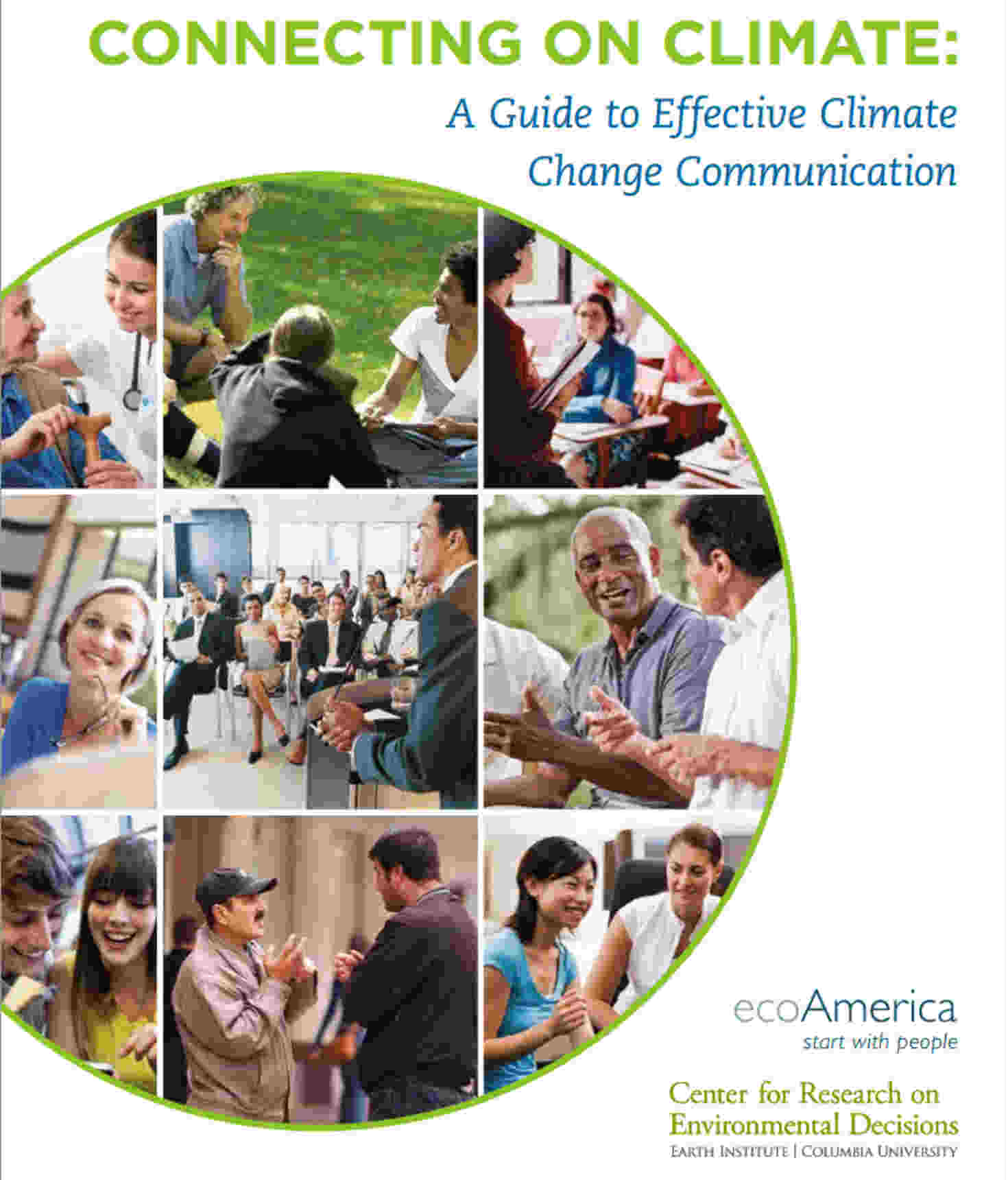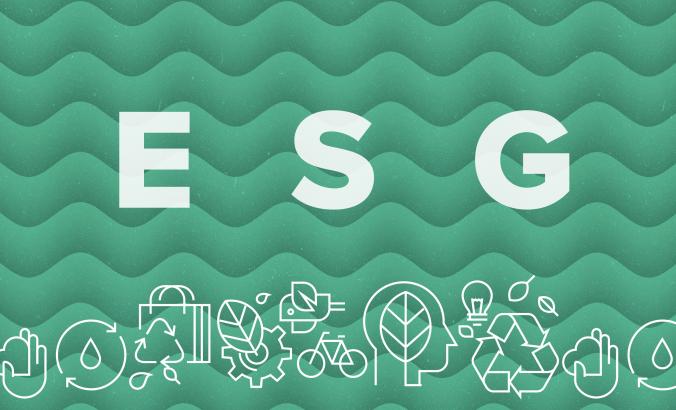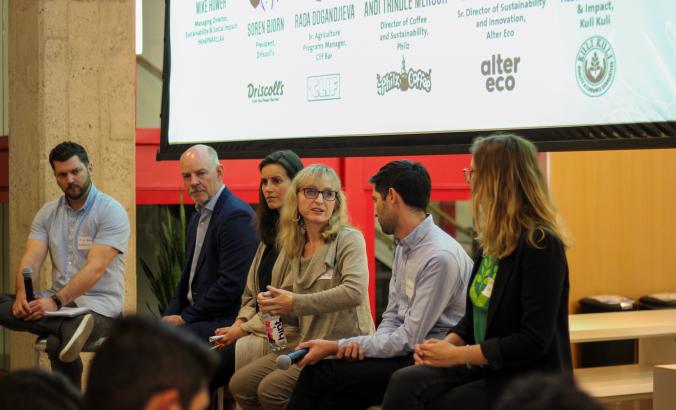Need to talk to a climate denier? Here’s how

It’s time to talk about climate change — whether you are a business leader, city planner, educator or just a climate-concerned citizen. But with nearly a third of Americans outrightdenying the existence of climate change, and more than half (56 percent) of those who concede that the planet is warming up refusing to attribute it to human activities, you'vegot your work cut out for you.
The purpose of climate communication is to encourage decision-making that will help mitigate further climate change and help communities prepare for climate impacts. We can achieve these changes through several avenues, including increasing public support for new policies and regulation, directly persuading people to change their behavior and changing the decision-making environment to make positive action easier and more automatic.

1. Put yourself in your audience’s shoes
Communicators must be skilled at identifying and appealing to different audiences’ specific worldviews. Cutting-edge social science research shows that people tend to interpret new information through the lens of past experiences, knowledge and social context. This is doubly true when it comes to complex scientific and societal issues such as climate change, where objective facts about the state of the world are not the only factors that influence what people believe and how they respond.
For example, someone who values prosperity might be motivated by a message that emphasizes how clean energy solutions can unlock new economic opportunities for American families. This echoes a key takeaway from the recent American Sustainable Business CouncilBusiness Summit: Environmentalism needs an economic message.
2. Channel the power of groups
Climate communicators can harness the influence of groups by helping people view their actions and responses to climate change as part of a larger group effort, whether it is a neighborhood, a company or a faith-based organization. Humans are social animals and often think and behave differently when they’re physically part of a group or reminded of their membership in a group. An effective way to keep people engaged in the long term is to weave climate change into the activities of existing social groups and networks, such as neighborhood associations, religious groups, clubs, parent–teacher associations or company departments.
3. Emphasize solutions and benefits
Nobody likes a downer — that is why it’s better to lead with solutions, rather than the problem. This makes it easier for people to accept that climate change exists because solutions imply action and opportunity. Rather than talking about falling skies, communicators should work to build confidence that climate change can and will be addressed; highlight the benefits of taking action and align solutions with your audience’s values and priorities.
4. Bring climate impacts close to home
Most people have a tough time thinking about, or acting on, things and events that are perceived as far in the future, physically distant, happening to other people or involving uncertainty. To help overcome this psychological distance, the report says communicators can use vivid imagery and messages to help people identify the locally relevant, personally experienced consequences and impacts that climate change is already causing. This could mean something as simple as talking about the loss of property from intensified extreme weather events and the greater spread of infectious diseases. But tread carefully; making the issue “too real and too scary” can lead to denial of the problem.
5. Connect climate change to issues that matter to your audience
气候传播者更容易成功时,他们表现出气候变化如何连接问题或疑虑,他们的观众关心。最有效的传播者知道何时以及如何利用内容帧,这可能突出气候变化的公共健康问题,气候变化和国家安全,以及如何应对气候变化(和气候解决方案)影响个人健康和家庭之间的关系良好存在。例如,市领导们发现成功reframing the climate conversationto be more about resilience than climate change itself. Likewise, communicators can use structure frames to shape how an audience relates to a message by emphasizing “when,” “where” and “how many.”
6. Use images and stories to make climate change real
Making use of images that inspire and empower can be useful in attracting audiences’ attention or helping empower audiences to act. It also may help to employ cultural archetypes or icons to help audiences relate to climate change more effectively. Although data can be helpful, research shows thatvisualizationssuch as bar charts, pie charts and scatter plots are among the least memorable of all images. Rather, images of people or groups, faces and common household items are the most powerful.
7. Make climate science meaningful
It goes without saying that most Americans’ understanding of climate change is “limited.” Nevertheless, peopleform opinions基于心理模型由一个混合of associations with the phrases “global warming” or “climate change,” memories of related phenomena and past experiences, analogies they’ve heard from others, intuitive perceptions and relevant but incomplete sets of facts.
People also are reluctant to accept new information that does not confirm what they already believe, research shows. Communicators can overcome this confirmation bias by making audiences aware of the phenomenon. They can ask audiences to question themselves: “Could I possibly be wrong?” and “What would be the worst thing about being wrong?” Of course, this also can come off as incredibly pretentious, so be careful.
8. Acknowledge uncertainty, but show what you know
Acknowledging uncertainty at the beginning of a climate conversation can increase people’s willingness to engage with the issue. But be careful: people dislike uncertainty and are unlikely to support action if they believe scientific or political uncertainty makes the problem too difficult to solve. It’s best to highlight solutions that involve relatively little uncertainty, but always try to determine how your audience responds to uncertainty, as well as which uncertainties matter to them.
9. Approach skepticism carefully
怀疑是一种自然科学专业的一部分cess, but dealing with skepticism based on false information can be as frustrating as it is unproductive. Someone who questions climate change because he or she has been exposed to false information may need to be made aware that false information campaigns are going on and that they do not represent accurate science. However, communicators should avoid providing too many counter arguments to refute a myth — this can lead to overkill. It’s better to lead with the core concept you want people to grasp and use only a few of the clearest, most important facts — preferably from trusted and reputable sources.
10. Make behavior change easy
Communicators should strive to create a decision-making environment that makes positive action easier and more automatic. Research shows that people tend to stick with the option, choice or behavior that is preselected for them or selected automatically — this is called the default effect. Communicators can make climate-friendly behavior easier for people by presenting the climate-friendly option as the default. They also can help facilitate behavior change by highlighting social norms surrounding climate-friendly behavior, when they exist. For example, in our app-crazed world it could be effective to highlight eco-friendly actions people can takeusing their smartphones.




